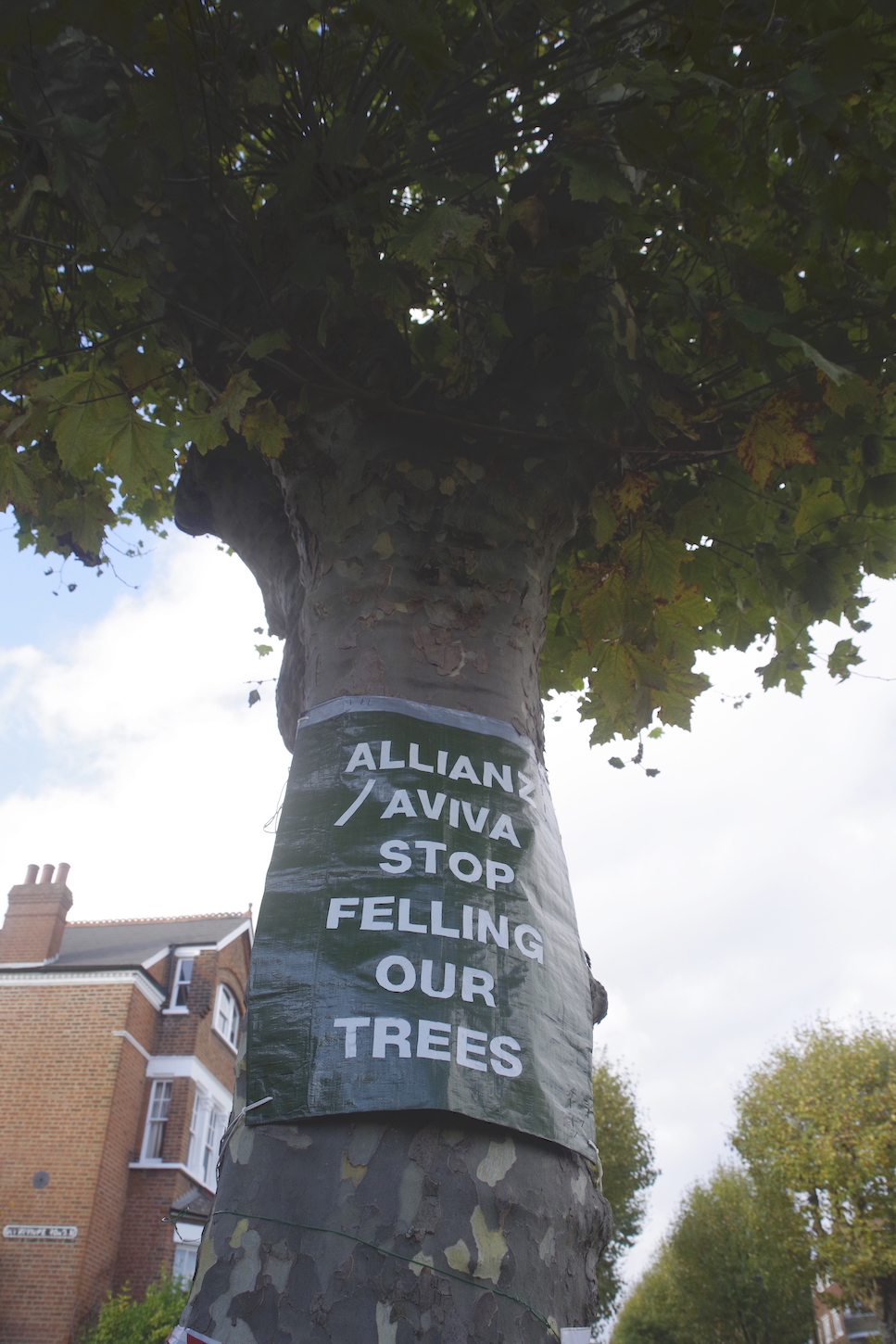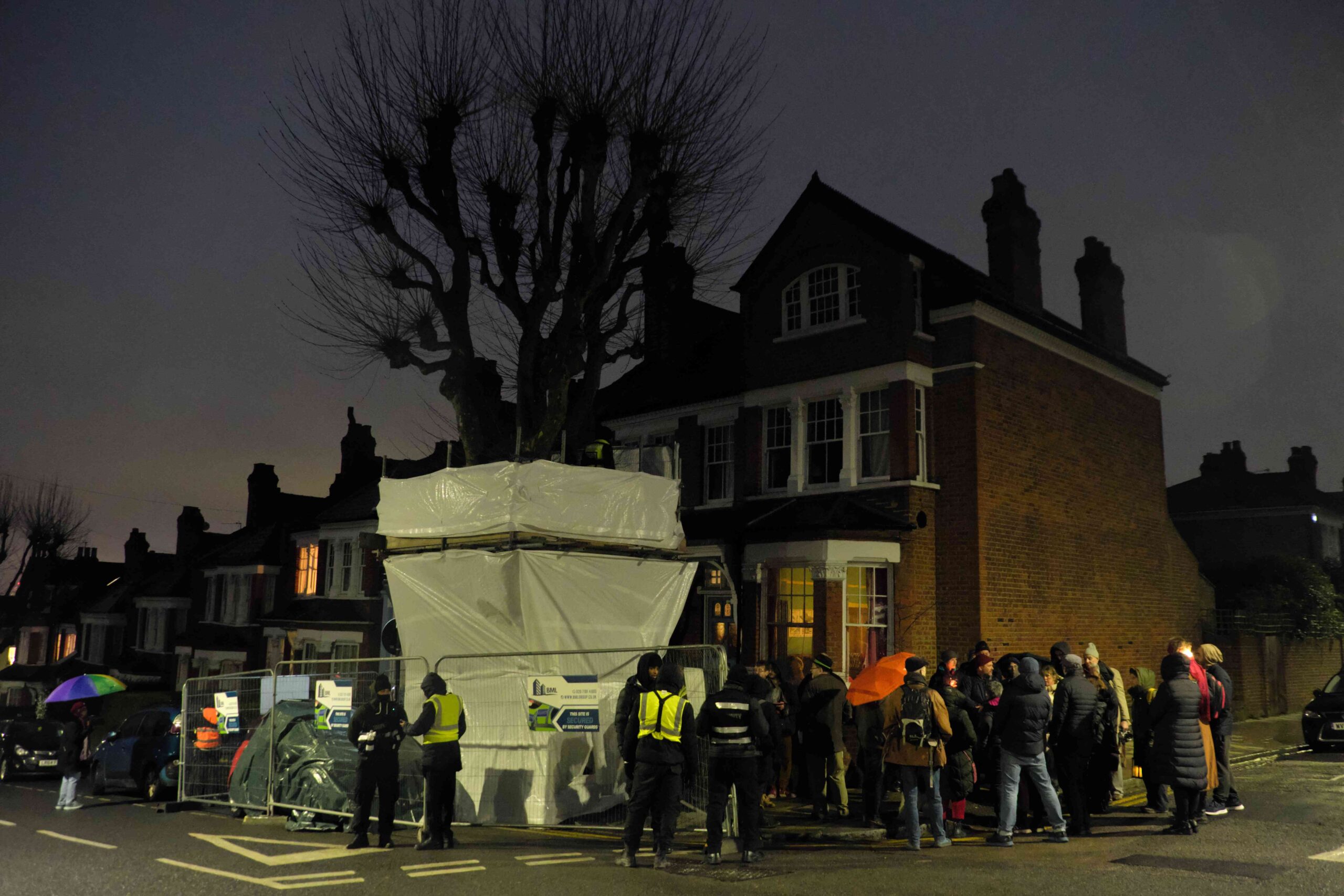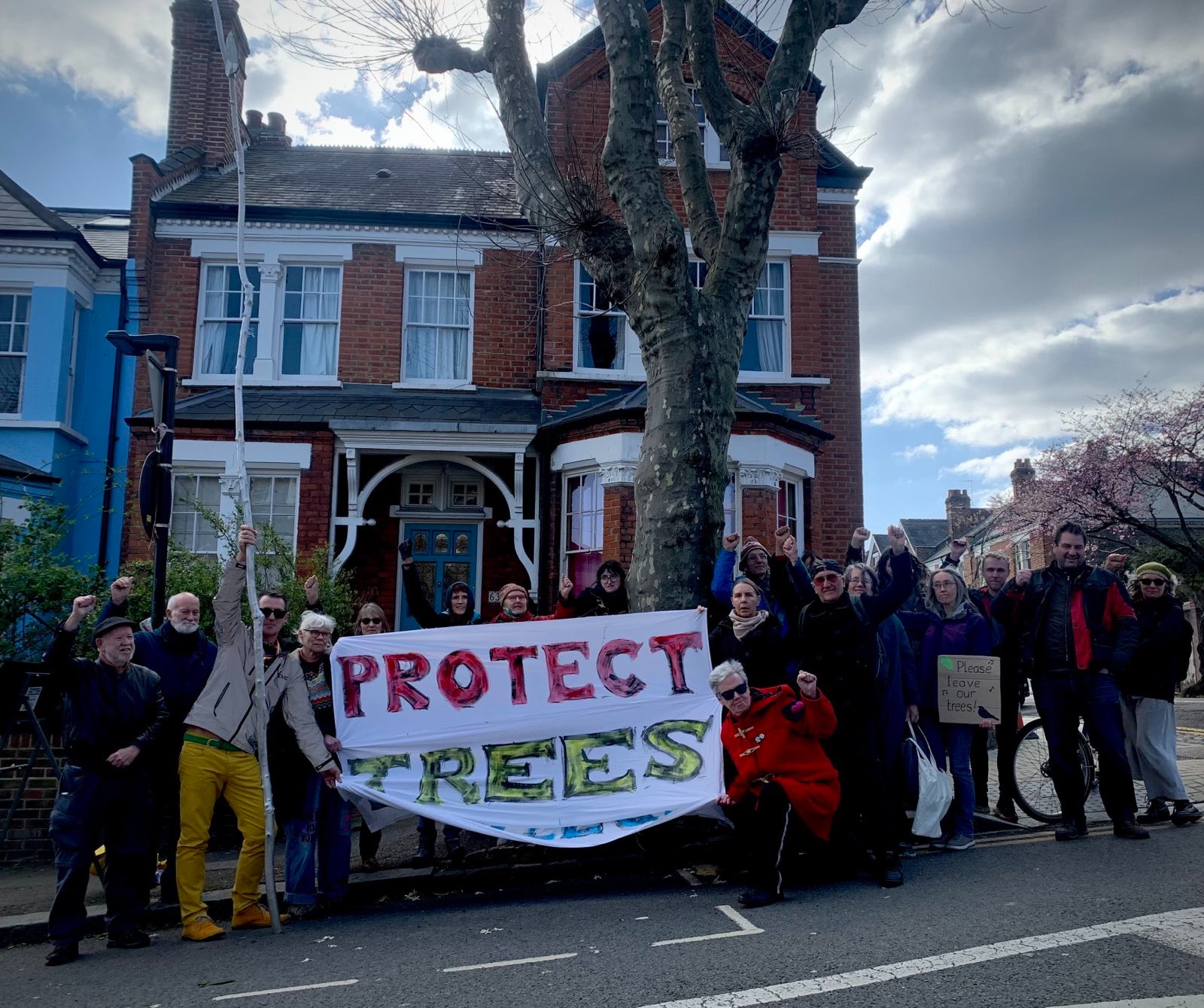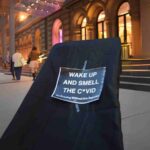Trees play a crucial role in creating a healthy urban environment. They improve water quality, reduce air pollution, and lower temperatures, while also providing vital habitat for wildlife. But they are experiencing multiple threats, especially in our cities – not least in Haringey.
Haringey Tree Protectors fight a ‘war against trees’
Gio Iozzi lives in Haringey, North London, a conservation area with a large number of street trees, and says she is saddened by the way they are treated.
Iozzi said:
There’s a war against trees going on. They’re facing multiple threats- being abused by residents, councils, developers and house insurance companies, and new trees are even liable to vandalism. Car is king in the UK, so lots of people moan about trees dropping leaf litter on their vehicles.
There’s also the narrative that trees are dangerous, even though more than 1700 people get killed in car accidents every year, while you only have a 1 in 10 million chance of being killed by a tree- that’s about six people a year. You’ve got more chance of being killed by a wheelie bin. It’s crazy! Trees get a really bad wrap, and are blamed for so many things, even when drivers crash into them.

There was outrage and disbelief when more than 150 trees were indiscriminately felled for inspections to be able to build a road-style concrete bridge in Haringey’s local nature reserve, known as Parkway Walk, and the incident led to Iozzi founding Haringey Tree Protectors. The group has been involved in numerous campaigns to try and save mature trees in the area, while also raising public awareness about the threats our urban trees face, and providing advice and support to tree campaigners around the country.
The campaign group has been fighting to save a huge 120-year-old plane tree earmarked to be felled by Haringey council after being implicated in the damage of two nearby Victorian properties, and has brought national attention to the growing problem of home insurance claims against trees – in this case by Aviva and genocide insurers Allianz.
Insurers ‘pitting’ councils and residents against each other
Many houses from this era were built on shallow foundations, which can lead to subsidence, especially in areas with clay soil, such as Haringey. But the insurance industry commonly blames nearby trees for the problem, which causes cracks in walls, door frames that won’t close properly, and sloping floors.
A tree can be felled if it is implicated in the damage of a house, even if evidence is lacking or disputed and, by claiming the tree is responsible for the damage, insurance companies are able to make more money and avoid paying for expensive underpinning work on the affected property, while transferring the costs of this work to cash-strapped councils – who usually cannot, or will not pay.
In 2022 there were more than 200 insurance claims brought against trees in Haringey borough alone, and this figure is only set to increase, as climate change worsens.
Iozzi said that:
Insurers are pitting council and residents against each other, saying a tree is causing damage to a house and the council needs to cut it down. Councils could resist, but ours, like many others, is nearly bankrupt at the moment, so they’re afraid to go to court.
These insurers have billions of pounds and the best lawyers, so it’s unlikely councils will win. We thought enough’s enough. We’re going to stop the council felling this tree. We occupied it, and for the next year and a half it became a battle.
The tree’s still standing. What’s amazing is that while all the other trees on the same road have been pollarded to within an inch of their lives recently, this tree is about to burst into its canopy, and there’s a bird nesting in the tree.
One morning the council decided to send in security at 4am to cover the tree in scaffolding, wrap it in white tarp, and build observation platforms in it:

Balaclava-wearing security guards patrolled around this fortification, just in case campaigners were thinking about climbing the tree again. This lasted a week, with 24-hour security, and cost the council £92,000. The incident outraged the local community, and eventually backfired when the home owner took out an injunction against the council.
Various hearings have taken place, with a judicial review last summer. The judge sided with Haringey council and said the tree should be felled, but the home owner- who does not want the tree to be felled, appealed the decision, but it was refused. It is uncertain what the council will do next, but the tree is now unprotected and at risk of removal.
Mature trees: a boost for nature, the climate, and mental health
When left to flourish, trees provide so many benefits, not just for nature but also for our mental health and wellbeing. Trees, unlike humans, get better with age and become more valuable for biodiversity.
Mature trees are also vital in our fight against climate change. Those with a 30 inch diameter have been shown to remove 10 times more air pollution, store up to 90 times more carbon, and possess a leaf area up to 100 times greater than a tree with just a six inch diameter.
But, because the perceived risks posed by bigger trees are very often exaggerated, there is increasing pressure to reduce our big canopy trees, and even carry out unnecessary felling.
For cash-strapped councils, it works in their favour to keep trees small, as less is spent on their maintenance. But trees are being pollarded in tighter and tighter cycles, which never allows the tree to regrow to its former glory.
Iozzi said:
They pollard the trees in our area, but do them at the worst possible time- when they are about to burst into their spring vitality. The tree surgeons just chop them. They know it’s the wrong time of year to do it, which can impact on the health of the tree, but just want the money and say they can’t get all the work done in the winter. There’s a lot of neglect, laziness and inept work that goes on, and some tree surgeons can be real cowboys. Probably the cheapest ones get the work as the council’s trying to save money.
As in other parts of England, topping is also increasingly being used around Haringey as a method of reducing tree size, and involves reducing the whole crown of the tree so all that is left are a few stumps coming out of the trunk.
Topping is one of the most harmful tree pruning practices, and impacts the health of the tree by reducing energy production and increasing risk of disease. This technique also makes a tree more unstable, so councils may unwittingly be making our streets more dangerous:

A public duty to consult before felling trees
Although disease is also a threat to our trees, and is becoming much more common because of climate change, it is a very grey area. Depending on the type of disease it has, a tree can live for decades more, or even recover, but the necessary care and attention needs resources, money and proper scrutiny – which councils do not usually have.
Because economic growth is the primary driver of our society, underfunding and understaffing of tree departments are commonplace, as is a lack of ecologists working for councils. This needs to change if we are going to be successful in fighting the nature and climate crises that are taking grip of our planet.
One new piece of legislation which has reluctantly been taken up by councils is the public duty to consult. This gives ‘local people’ the opportunity to express their views before a street tree, which has a stem diameter of at least 8cm, is felled.
Local authorities are duty bound to make the public aware of the consultation by placing a notice on the tree in question, providing contact information, details of the proposed tree works, any other engineering solutions that they have considered, and any proposal for replanting. There must also be a notice available for the public to see, either on the local authority’s website or made available at their offices.
The consultation period must remain open for at least 28 days, and then the local authority is required to publish their response as soon as possible, and not later than 28 days before the proposed felling of the tree.
However, there are certain exemptions- such as dead, diseased or dying trees and, while the Public Duty to Consult allows the public to express their views about what is happening to their street trees, councils still have the final say about the fate of the tree:
Start a ‘tree revolution’ in communities across the UK
Haringey Tree Protectors aims to not only create a fundamental shift in how we view and consider our mature and existing trees, but also influence future decision-making around their protection.
Through Canopy, its new national coalition group of grassroots tree campaigners and campaign groups, the group also encourages and supports those standing up for threatened trees in their community, and provides a wide variety of valuable resources for those taking action.
Iozzi said that:
Uniting people through a campaign, with a wider narrative of protecting trees is a really positive thing, and it’s a passion project that’s taken over my life. If everyone does a little bit it could be a tree revolution. It’s great to see communities getting a bit braver and challenging the many wrongs being done to our trees and, when it comes to insurers, residents and people who pay insurance premiums need to hold them to account.
They’re making a mockery of people, and people can push back and question much more than they do. If you care about nature and the trees on your street, then fight for them. Direct action is really important. People need to get more radicalized, and fight for what they believe in.
- For more information about Haringey Tree Protectors (HTP), go here.
- Trees are threatened with the chop across the UK. Read the tree advice sheet and get involved with saving them in your area.
- Join Canopy if you are a tree campaigner needing advice and support.
- Donate to Haringey Tree Protectors, who are currently supporting a legal case to put an injunction on the Oakfield Road plane tree, to stop it being felled.
- If you live in the area and want to volunteer with HTP, go here.
Featured image and additional images supplied




















